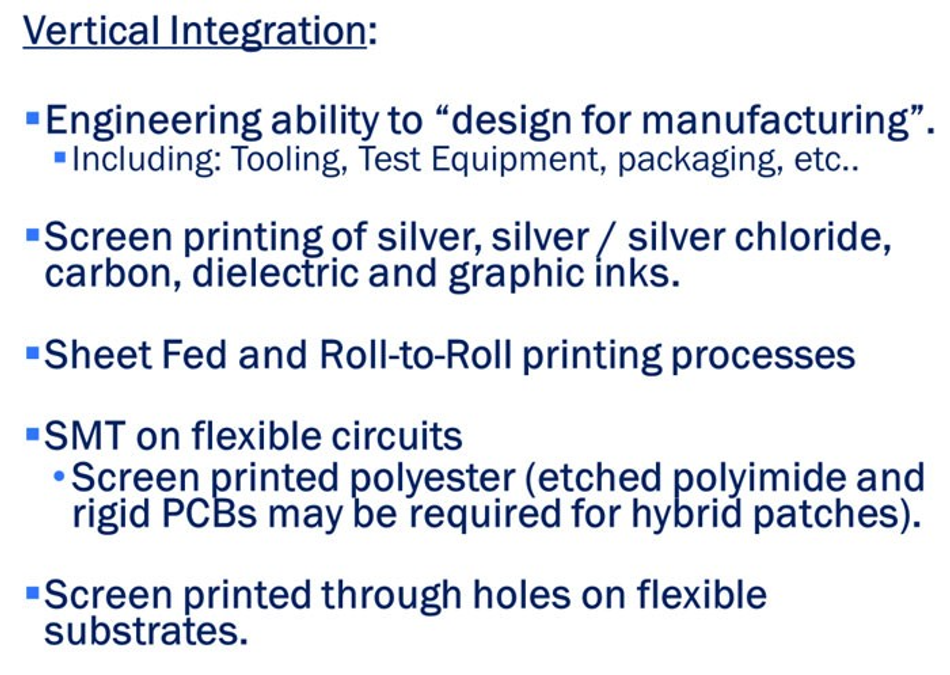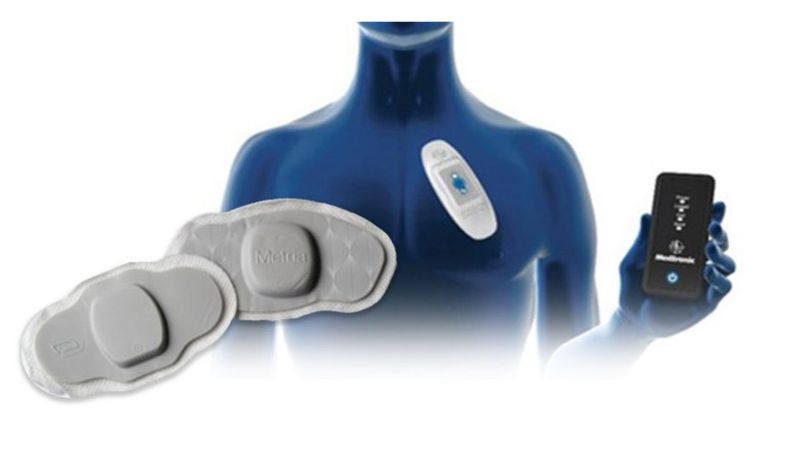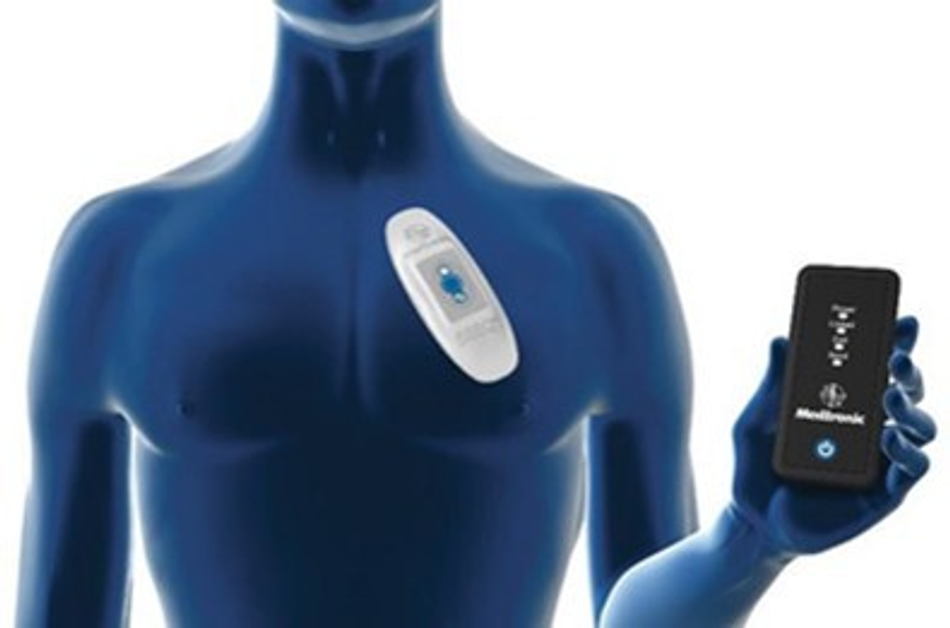Mass producing wearable biosensors
As wearable electronic devices continue to be more prevalent, it becomes an ever-greater challenge for companies that manufacture them to keep their competitive edge. It is vitally important for manufacturers that each device is effective, cost-efficient and reflects the highest quality available.
Mass producing wearable biosensors:
To cost effectively mass produce wearable biosensors, vertical integration and assembly operations is key. Having the ability to print conductive inks on flexible substrates and fully perform converting operations (such as lamination of medical grade hydrocolloids, adhesives, non-woven and foam layers, hydrogel dispensing and or placement and final packaging) in SMT components and any connections on the non-patient side of the patch (ensures patient comfort). Have been successful in .010” diameter via hole print filling in order to have continuity between skin contact and a assumed communication device.

Technologies Used to Manufacture Biosensors
Process for manufacturing biosensors employ screen printing, laser cutting, lamination, and adhesives. Screen printing of various conductive inks, such as but not limited to silver, silver/silver-chloride, carbon, zinc, gold, dielectric, etc. In addition, Surface-Mount Technology (SMT) is used if components are required. There are several key converting processes, including die-cutting, lamination of medical grade foams and adhesives, as well as the dispensing and placement of medical grade hydrogels and final packaging. The role of printing through holes methods, which allow for connections between the top and bottom printed circuits and up to 6 layers per side.
Majority of applications, biosensor manufacturing involves a supply chain of companies since few companies possess all the necessary capabilities. Required functions in detail as follows:
Circuit/Electrode printing
- Sheet or R2R
- Typically, 2 to 5 print passes
- Oven drying or UV curing after each print pass
- Oven dwell typically ≤10 minutes ≤140°C
Slip sheet or interleaf may be required to prevent ink rub-off since carbon inks tend to be soft and transfer to backside of substrate when stacked or wound in rolls
- Routine in-process measurements to confirm conformance to agreed dimensional, ink thickness and electrical specifications
Patterning of spacer/adhesive layer
- One or combination of SRD, Rotary, Match Metal and/or Laser
Patterning of lid or top layer
- Same as spacer/adhesive
Dispensing & drying/conditioning of functional material
- This is where most of the intellectual property (IP) exists and is often performed by the OEM. This is changing as more medical converters are adding dispense capability in an effort to add value
Laminating
- Cold with pressure sensitive adhesive (PSA) or heated (hot melt)
- Performed by OEM or converter
Option – Cartridge or Cassette type configuration
- Application may skip lamination process and instead die cut individual sensor circuits and install them into an injection molded plastic microfluidic cartridge or cassette.
Sheet/Roll to Cards
- Large format cut down to rectangular card format (sensors nested 1 row x TBD across) for compatibility with commercially available strip singulation equipment
Singulation
- Individual sensors are typically slit from cards into individual test strips
Packaging
- Singulated test strips placed in plastic vials – often having inside walls lined with a desiccant. Screw or snap cap installed, followed by application of label


